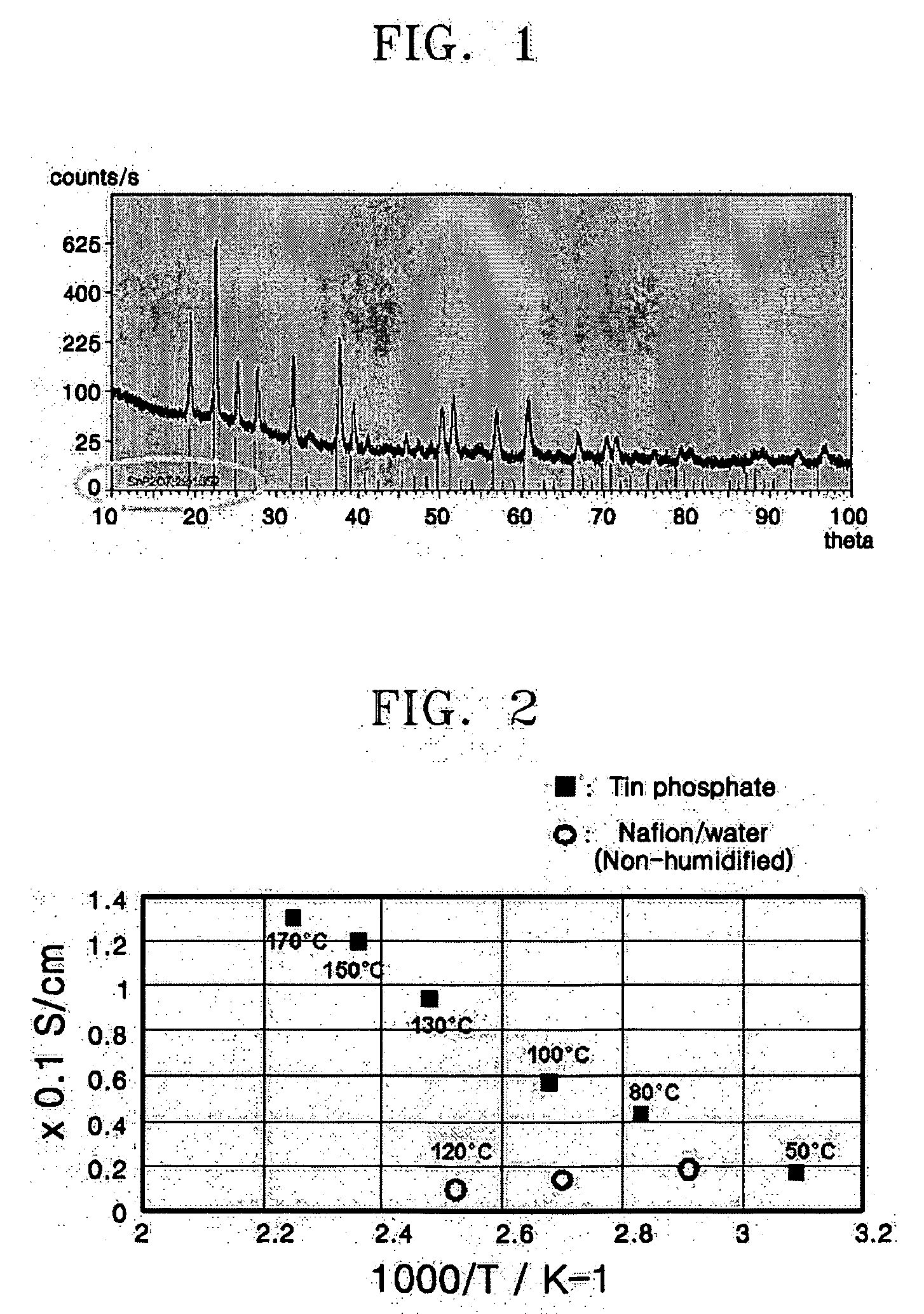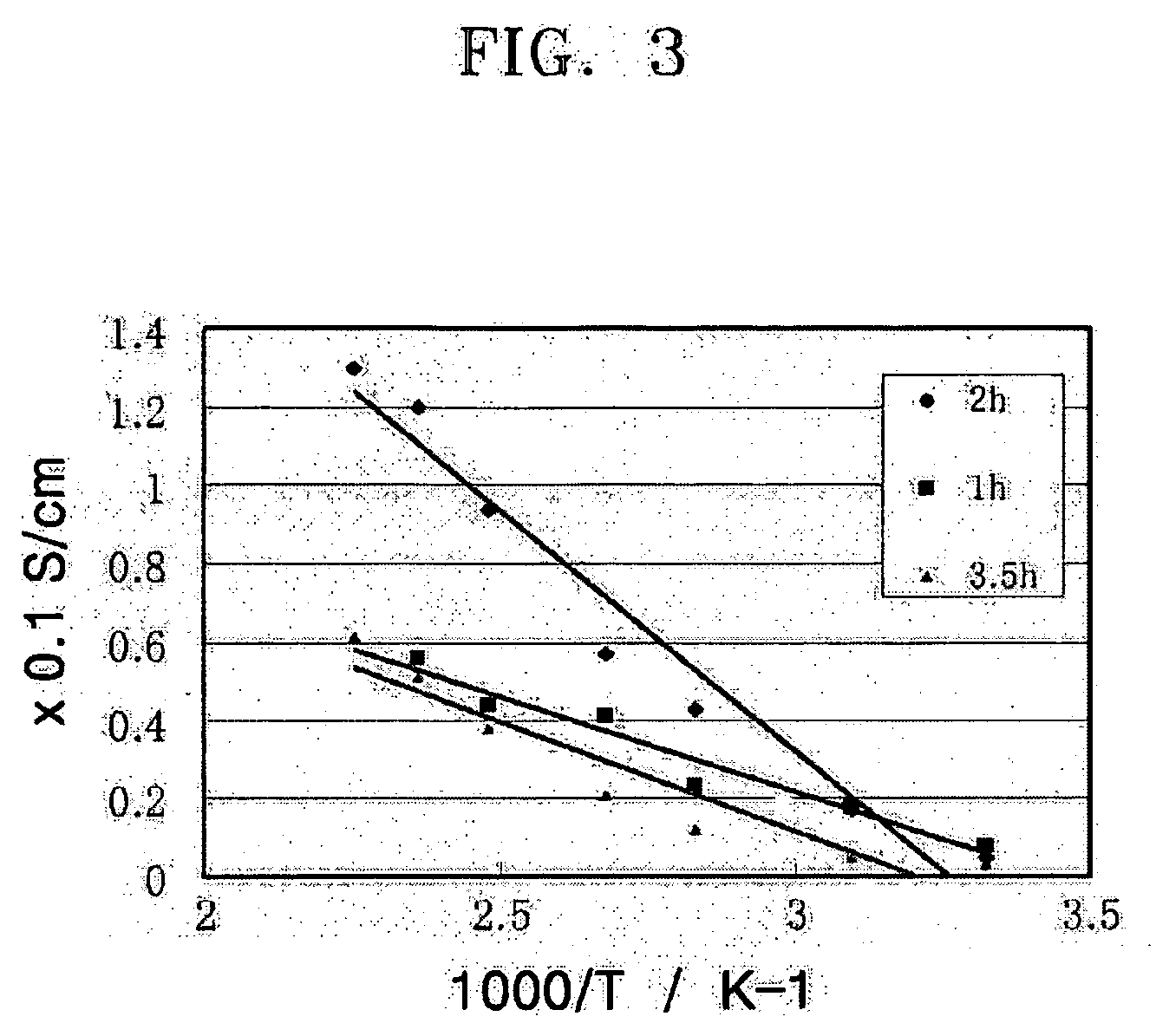Proton conductor
a proton conductor and fuel cell technology, applied in the direction of non-metal conductors, cell components, tin oxides, etc., can solve the problems of indirect external humidification method, decrease in the proton conductivity of the polymer electrolyte membrane, and disadvantages of the proton conductivity of the polymer electroly
- Summary
- Abstract
- Description
- Claims
- Application Information
AI Technical Summary
Benefits of technology
Problems solved by technology
Method used
Image
Examples
example 1
Preparation of SnP2O7
[0049] An aqueous ammonia solution was dripped into an aqueous SnCl4 solution, to produce Sn(OH)4. The Sn(OH)4 was washed with water, filtered, dried at 80° C. for 5 hours, dried again at 130° C. for 5 hours, and heat-treated at 550° C. for 2 hours. As a result, SnO2 or SnO2 hydrate represented by SnO2.xH2O where x is in the range of 0 to 4 was synthesized.
[0050] The SnO2.xH2O and 105 wt % phosphoric acid (obtained from Rasa Industries, Ltd. of Japan) were mixed in a weight ratio of 1:2 and stirred at 350° C. for 3 hours. The resulting mixture was heat treated at 650° C. for 2 hours, to form a powder. The powder was identified using x-ray diffraction (XRD). The results are shown in FIG. 1. Based on the pattern illustrated in FIG. 1, it was confirmed that the power was SnP2O7.
examples 2 and 3
Preparation of SnP2O7
[0051] Two SnP2O7 samples were prepared in the same manner as in Example 1, except that the mixture of SnO2.xH2O and 105 wt % phosphoric acid were heat treated at 650° C. for 1 hour and 3.5 hours, respectively.
[0052] Ionic Conductivity of SnP2O7 Pellet
[0053] The SnP2O7 powders prepared in Examples 1 to 3 were pressed at a pressure of about 45 MPa to form pellets that have a cross-sectional area of 3.14 cm2 and a thickness of 1 to 2 mm. The ionic conductivity of the SnP2O7 pellets with respect to temperature was measured using a 4-probe conductivity measuring device. The temperature was changed from room temperature to 170° C. under a frequency of 100 KHz to 1 Hz, a voltage of 100 mV. The results are shown in FIGS. 2 and 3.
PUM
| Property | Measurement | Unit |
|---|---|---|
| temperature | aaaaa | aaaaa |
| temperature | aaaaa | aaaaa |
| operating temperature | aaaaa | aaaaa |
Abstract
Description
Claims
Application Information
 Login to View More
Login to View More - R&D
- Intellectual Property
- Life Sciences
- Materials
- Tech Scout
- Unparalleled Data Quality
- Higher Quality Content
- 60% Fewer Hallucinations
Browse by: Latest US Patents, China's latest patents, Technical Efficacy Thesaurus, Application Domain, Technology Topic, Popular Technical Reports.
© 2025 PatSnap. All rights reserved.Legal|Privacy policy|Modern Slavery Act Transparency Statement|Sitemap|About US| Contact US: help@patsnap.com


